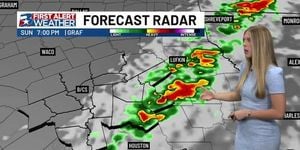Severe weather conditions have gripped Eastern Canada, bringing significant snowfall and high winds, disrupting travel and daily activities. Environment Canada has issued warnings across the region, highlighting the challenges posed by snow squalls and forecasting substantial snowfall amounts over the next few days.
Residents of Northern Ontario have faced numerous road closures due to the unforgiving weather. According to Ontario 511, major routes such as Highway 144 between Timmins and Greater Sudbury have been closed. The situation is dire on Highway 101, which has been shut down between Wawa and the junction with Highway 651, and Highway 631 is also closed from White River to Calstock. Snow-covered roads are making visibility hazardous, especially on Highway 17 between Terrace Bay and Batchawana Bay, along with several other highways including 614 and 519 leading to Manitouwadge and Dubreuilville respectively.
Snow squall warnings have been issued for areas bordering the eastern shore of Lake Superior, particularly affecting communities like Sault-Sainte-Marie and Wawa. The severe conditions are not isolated to Ontario. Peter Kimbell, meteorologist with Environment Canada, has anticipated heavy snowfall for the Eastern Townships, projecting between five and ten centimeters from Thursday afternoon. "The snowfall may be heavy at times, leading to reduced visibility," Kimbell warned. Following this period, light freezing drizzle is expected briefly before regular intermittent snow returns in the evening.
Weather conditions have already led to school closures across the Matanie area, where classes have been suspended due to safety concerns with overnight snowfall and wind gusts reported at up to 80 kilometers per hour. News outlets have highlighted the importance of remaining cautious, particularly as snow squalls lead to sharp declines in visibility, worsening travel conditions throughout the region.
Even as some regions brace for temporary breaks, additional amounts are likely from weather systems moving across the region, with predictions of another five to ten centimeters of snow this coming Sunday due to the Colorado low system. This rapidly changing weather is influencing what residents can plan for, with travel advisories strongly recommended as visibility can fluctuate dramatically.
Looking at the broader picture, the easternmost areas of Quebec are also bracing for similar weather challenges. Environment Canada continues to monitor conditions closely, highlighting areas like the Côte-Nord region, where some sectors are under storm warnings. With small amounts of snow also forecasted for Charlevoix, the region is experiencing temperatures and winds conducive to more challenging conditions.
For those planning to drive or travel during this tumultuous weather, Environment Canada is advising local residents to exercise caution, as the combination of snow and wind creates the potential for blizzard-like conditions. It’s recommended to stay updated through local maps and bulletins, especially as more weather system activity continues to flow through the area.
Overall, these severe winter conditions are serving as a reminder of nature's unpredictability, emphasizing the importance of preparedness as Eastern Canada endures the impact of winter storms. Residents are advised to stay updated on local weather advisories, keep emergency supplies close, and avoid unnecessary travel until conditions improve.



